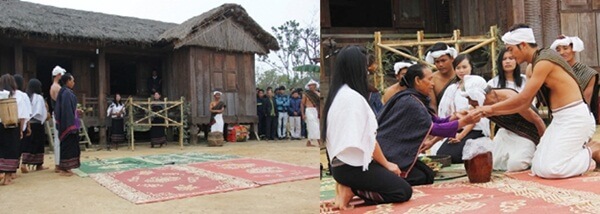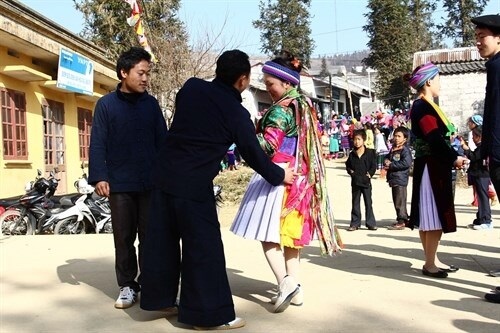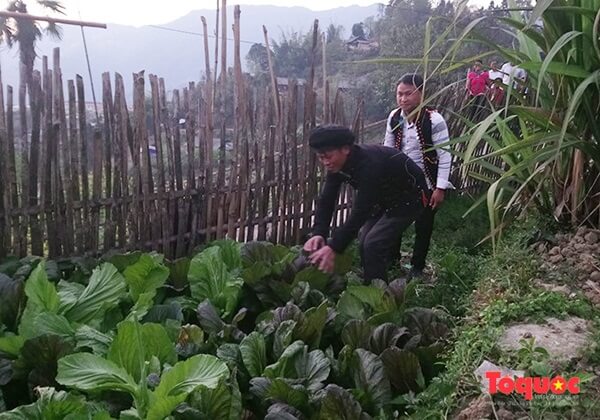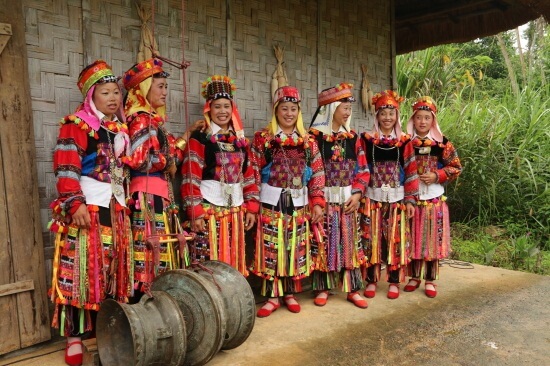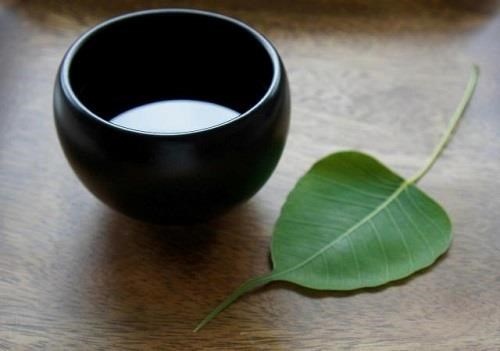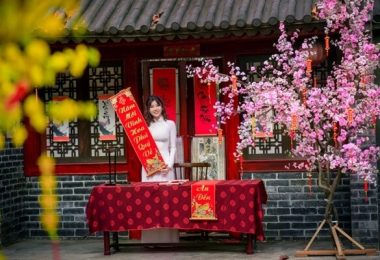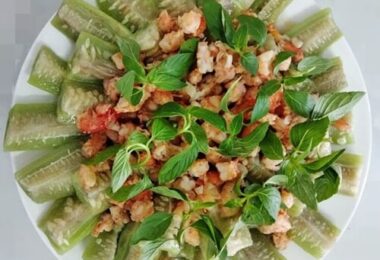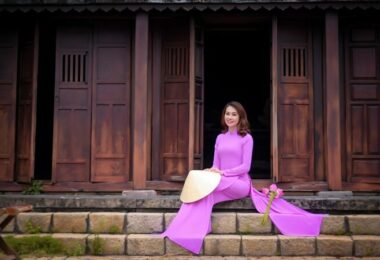Vietnam’s ethnic communities celebrate the Lunar New Year with traditions that are as fascinating as they are diverse. Here are five remarkable customs you might encounter.
1. Catching a Husband – Chu Ru Ethnic Group, Central Highlands
From the first days of the Lunar New Year until the third lunar month, wedding season sweeps across the Central Highlands. For the Chu Ru people, it’s the bride’s family—not the groom’s—that takes the first step.
When a Chu Ru girl falls in love, she tells her family. At night, she and about ten relatives bring gifts to the boy’s home, with her uncle speaking on her behalf. If the boy’s parents agree, they consult their son. With his consent, the girl offers him a scarf she knitted herself—a sign they are now husband and wife. The wedding follows immediately, and by dawn, the groom moves into the bride’s home.
If the boy declines, she tries again after seven days—persistence is part of the tradition.
2. Patting the Butt to Confess Love – H’Mong People
During the H’Mong’s Sai San Spring Festival (Gau Tao), love can be declared with a playful gesture. If a boy likes a girl, he pats her on the backside as they head to the festival. If she returns the pat, the feeling is mutual. Nine playful pats exchanged mean they are officially a couple.
This is rarely a random encounter—most pairs already know each other. The custom is more a joyful reunion and public expression of affection than a spontaneous romance.
3. Stealing for Good Luck – Red Dao People
For the Red Dao, “stealing” at the start of the year is a way to invite good fortune. On the full moon night of the first lunar month, villagers—young and old—join in.
Theft has its rules: only small items like eggs, onion stalks, buffalo meat, wine, or wild vegetables are fair game. The more you “steal,” the more luck you’re believed to gain. If caught, you must drink a bowl of rice wine as “punishment.”
When the fun ends, stolen goods are returned to their owners, often earning the “thief” a reward.
4. Awakening the Cattle – Lo Lo People
For the Lo Lo, livestock are family assets, so they must also be welcomed into the New Year. At the first rooster’s crow, families wake every animal in their care, accompanied by a small offering ceremony to wish them good health and productivity.
Farm tools are also honored—painted red or yellow and left untouched during the three days of Tet as a symbolic rest before the year’s labor begins.
> You may also want to explore a typical activity that often takes place during the Lunar New Year: the Vietnamese cockfighting game.
5. Worshiping a Bowl of Water – Pa Then People, Ha Giang
High in the mountains of Ha Giang, the Pa Then people welcome the Lunar New Year with a quiet yet sacred ritual: worshiping a bowl of water.
In every home, a water-filled bowl rests on the family altar, never allowed to run dry. On New Year’s Eve, doors are shut and every gap sealed from outside view. In the stillness, the head of the household carefully removes the old bowl, cleans it, and fills it with fresh water—inviting the arrival of spring.
This must be done in secret. According to Pa Then belief, if anyone outside witnesses the water being changed, misfortune will follow the family throughout the year.
Such traditions are part of Vietnam’s rich cultural tapestry, offering travelers a glimpse into the country’s deeply spiritual life—an experience as rare as it is unforgettable.

